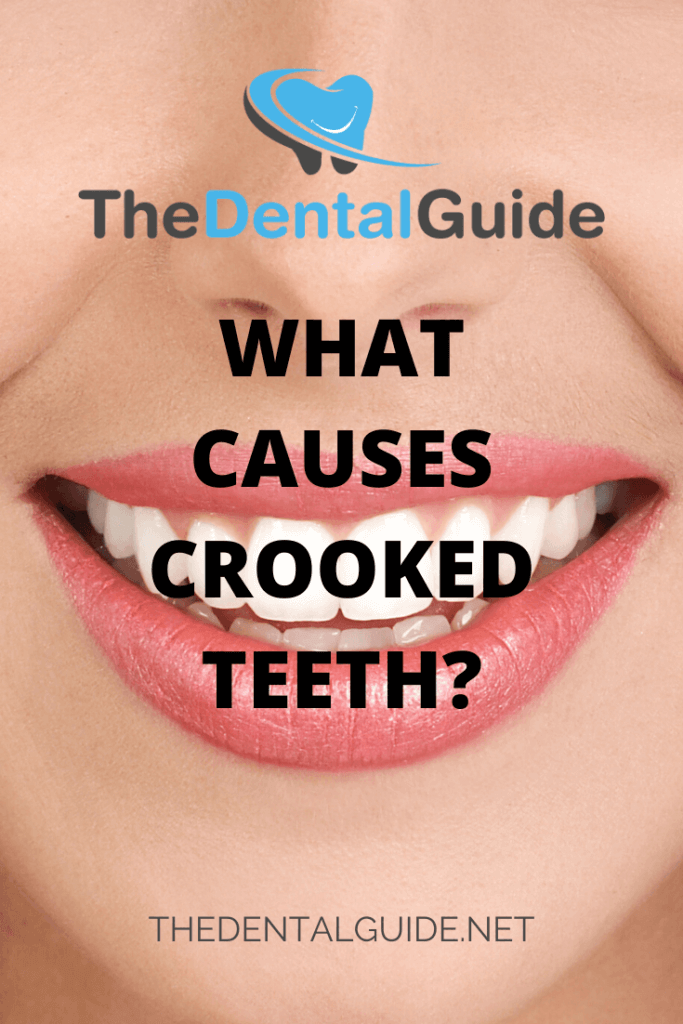Having a mouth full of crooked, misaligned teeth that overlap and crowd together is a common issue. But crooked teeth aren’t always a problem, and can even add character to a person’s smile.
It’s easy to determine if your teeth are crooked, but if you are unsure if they need treatment, a dentist can tell you if the misaligned teeth are likely to cause problems.
If you think you have particularly wonky teeth that make you feel uncomfortable, cause pain or give you problems with chewing or speech, there are plenty of options for straightening and correcting them.
Causes of Crooked Teeth
Primary and permanent teeth can become misaligned in both childhood and adulthood for many reasons.
- Genetics – The most common cause of crooked teeth is genetics. Just as our parents pass down eye colour or hair colour, they can pass down tooth alignment issues. If smaller mouths run in the family, that can also lead to overcrowding of the teeth.
- Jaw size – Science shows that our jaw sizes are narrower than they were in our ancestors, due to a dietary shift towards softer foods over time.
- Premature loss of baby teeth – If primary teeth fall out before they are supposed to, permanent teeth can often come in crooked or slanted.
- Myofunctional disorders – Incorrect or prolonged habits like pacifier and bottle use, thumb-sucking, mouth breathing, and tongue thrusting can contribute to crooked and misaligned teeth.
- Malocclusion – Misaligned jaw problems, such as an underbite or crossbite, can cause the teeth to move into the wrong positions to compensate for the bite issues.
- Facial injury – Trauma to the face or directly to the teeth or jaw can displace the teeth and cause them to shift.
- Hyperdontia – In some cases, people may be born with extra (supernumerary) teeth. When these come in, they push their way through and cause overcrowding.
Crooked baby teeth don’t necessarily mean the permanent teeth will be misaligned, but if there’s crowding of the baby teeth, crowding will likely be a problem for permanent teeth as well.
Problems Caused by Crooked Teeth
Mild cases of crooked teeth probably won’t cause too many problems, but more severe cases are likely to need treatment to avoid these preventable issues.
- Periodontal disease – It can be difficult to clean thoroughly between teeth and at the gum line if teeth are crowded and overlapping. Without proper cleaning, gingivitis, tooth decay, bad breath, and more severe periodontal disease problems can set in.
- Chewing problems – Misalignment of the teeth can interfere with proper chewing and speech. Problems chewing can lead to mouth sores if crooked teeth catch or rub the cheeks often when chewing. It can even lead to digestive issues.
- Excess wear – If teeth don’t meet the way they should when biting down, they can wear each other down as well as the gums and jaw muscles. Excessive wear can lead to cracked and chipped teeth, severe headaches, and jaw strain like TMJ (temporomandibular joint dysfunction).
Sometimes the only problem caused by crooked teeth is with self-esteem. If you feel self-conscious about your smile, know that it’s rare for anyone to have perfectly straight teeth naturally. However, if having crooked teeth is severely impacting your self-esteem, that’s a reasonable reason to seek treatment.
Treatment Options
Depending on the severity of your case, an orthodontist or oral surgeon will usually be the one to treat the crooked teeth.
There are several options for orthodontic correction.
Braces
Braces have come a long way over the years, and there are many options based on your dental needs and personal preferences.
Metal braces
Traditional metal braces are what you probably think of when you hear the word braces. This method uses stainless steel wires and brackets attached to each tooth with elastics to apply gentle pressure and gradually realign the teeth.
Self-Ligating Braces
Similar to traditional braces in most ways, self-ligating braces use clips to attach the brackets to the wires instead of the elastics used by metal braces. The use of clips can mean less maintenance than traditional braces.
Ceramic Braces
Instead of metal brackets, these braces use ceramic brackets made to be the same colour as the teeth or clear for a less noticeable look. Ceramic can be a bit more fragile than metal, however.
Invisible Braces
Invisible braces are clear aligners that take the form of removable plastic trays. You can remove the aligners for a better cleaning than traditional braces.
Some cases of misalignment are unfixable by braces alone. In more severe cases, it may be necessary to use palatal expanders and surgery in addition to braces to correct crooked teeth entirely.
